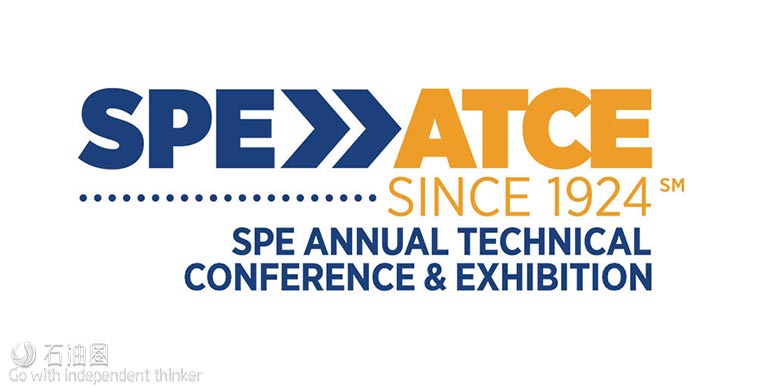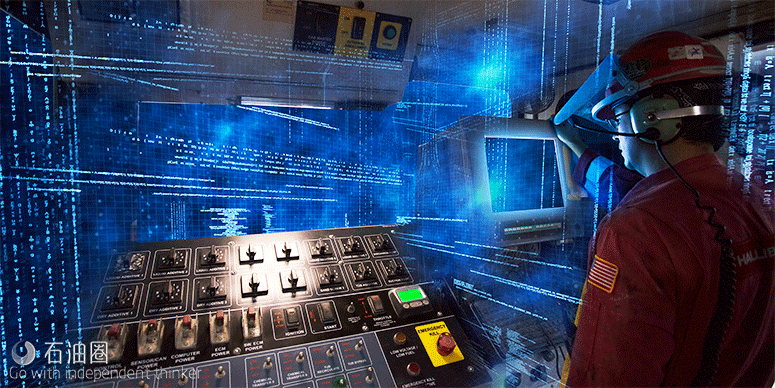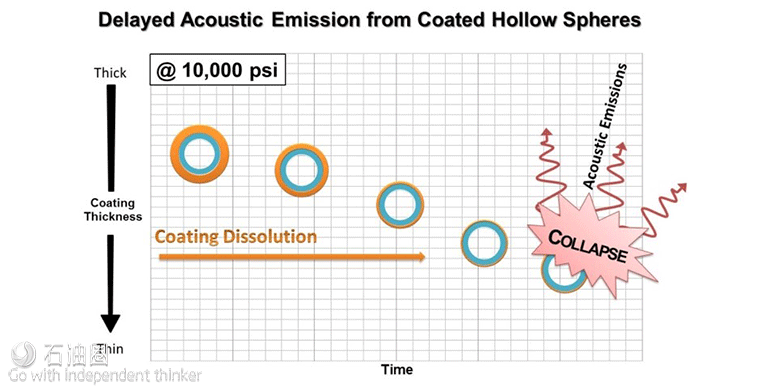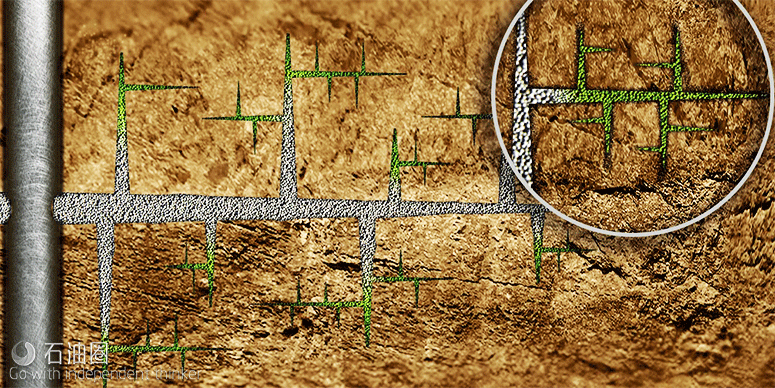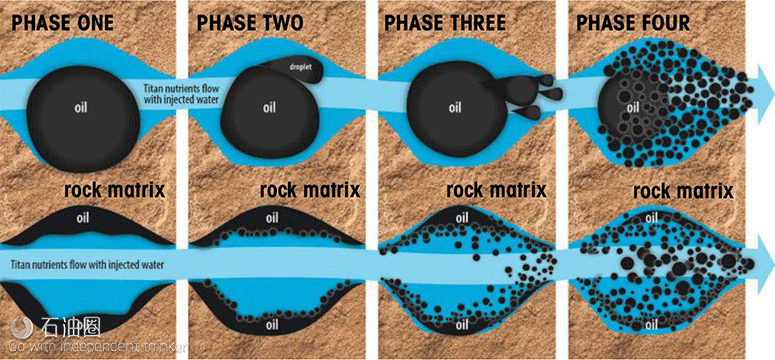Wear-resistant plunger can withstand severe abrasive conditions
One of the challenges that rod lift systems have faced for several decades relates to plungers being dubbed the “sacrificial component” between the plunger and barrel. Plungers coated in spray metal and TUFFR have been reliable at combating this belief, but the industry needs a plunger that goes beyond current standards. Apergy’s new Harbison-Fischer UltraClad Plunger, designed with the company’s next-generation UltraClad coating, is a premium wear-resistant plunger. This extremely durable plunger can withstand severe abrasive conditions and maintain high pump efficiency for longer periods of time. The UltraClad has proven to be an improvement over conventional coatings, with UltraClad having a better wear resistance than TUFFR by a factor of 18 in laboratory abrasion tests.
Ceramic microproppant maximizes propped contact with the reservoir
CARBO has released NANOMITE, a ceramic microproppant that is a fraction of the size of the smallest proppant commonly deployed to alleviate perforation entry issues, improve cluster fluid distribution and maximize contact with the reservoir. This results in improving stimulation efficiencies, reducing overall completion costs and improving production. NANOMITE is a cost-effective, ideal solution for operators experiencing difficulty with proppant placement, elevated treatment pressure and early screenouts during treatment. Traditional proppant is too large to fit into a complex fracture network’s microfractures, and its transport characteristics limit how far it travels into the area. The smallest particles of NANOMITE C are more than five times smaller than the smallest particles in 100 mesh frac sand. This allows the particles to prop open even the narrowest secondary fractures and microfractures, resulting in an increase in overall production contribution from the reservoir matrix while lowering high surface treating pressures.
Identifying and assessing early-onset damage
The productivity of wells completed in shale reservoirs can be substantially improved by Flex-Chem’s OptaSTIM technology. Insoluble material capable of severely blocking flow commonly forms due to undesirable interactions between shale reservoir formations and additives in many completion fluid systems. This damage, which forms early in the production life of the wells, is associated with highly variable completion outcomes and production restrictions. At ATCE, Flex- Chem Corp. will be highlighting its strong capabilities for identifying and assessing this early-onset damage as well as technologies and methods that address a range of formations and completion designs. Remedial treatments have shown marked success restoring flow conductivity in damaged zones and a proven record increasing well productivity.
Reservoir-centric full-fluid systems
Flotek will be showcasing its reservoir-centric full-fluid systems, which are built upon its Complex nano-Fluid technologies and proven to enhance and improve hydrocarbon recovery. Additionally, Flotek will present its comprehensive analyses of the effectiveness of its reservoir- centric approach across a variety of applications in oil and gas reservoirs in basins across North America, including completions, remediation, frac hits and enhanced waterflooding. Flotek’s chemistries have been used in more than 10,000 wells across every major basin in the world and are designed to address every challenge in the life cycle of the reservoir and maximize recovery in both new and mature fields. The company’s fluid systems are tailored to the reservoir to increase effective permeability, reduce formation damage and lower gasoil ratio in volatile oil reservoirs.
Intelligent fracturing service helps deliver uniform fluid and proppant distribution
In unconventional reservoirs, E&P companies are continually adjusting stimulation parameters in an effort to achieve more fractures per wellbore and improve well performance. Stimulating each cluster uniformly and achieving these outcomes in a timely and cost-effective manner is the challenge. Halliburton’s Prodigi intelligent fracturing service incorporates data from thousands of stages along with real-time information to help deliver uniform fluid and proppant distribution. This data-rich approach, coupled with an advanced control system architecture, enables the Prodigi service to more uniformly deliver proppant and fluid. Numerous wells instrumented with fiber-optic sensors have shown the Prodigi intelligent fracturing service helps eliminate underperforming stages. Additional benefits can include lower treating pressure, faster stage pumping times and reduced screenouts. To date, the Prodigi service has improved stimulation effectiveness on more than 4,500 stages within 12 different basins for 35 E&P companies.
Technology reduces the production of formation water
Hexion’s AquaBond technology reduces the production of formation water while improving oil and gas production. It increases well profitability by reducing formation water management costs. Its chemistry is bonded to proppant and remains in place and effective for the life of the well. A recent case study in the San Andres Formation showed positive results utilizing just a 16.5% tail-in of 20/40 mesh proppants using the technology. Formation water production was reduced by 15%, while oil production increased by 28% compared to offset wells. In the Granite Wash, wells utilizing AquaBond technology with 40/70 mesh proppants realized a reduction of formation water by more than 43% compared to offset wells. Additionally, the average cumulative barrel of oil equivalent was more than 40% higher.
Tool analyzes interfacial behaviors of mini and microemulsions
KRUSS Scientific’s Spinning Drop Tensiometer (SDT) instrument is the ideal solution for the quality control and development of emulsions and surfactants, as it easily analyzes the interfacial behaviors of mini and microemulsions. It is commonly used in the petroleum industry where it is essential to measure extremely low interfacial tensions, such as in EOR processes. Unlike older instrumentation, the SDT has significantly reduced the laborious sample preparation experience through newly patented accessories. And paired with the ADVANCE software, the instrument can be automatically controlled and utilizes prepared and easily adaptable templates.
PLA resins produced in various grades, optimized for a range of applications
While polylactide (PLA) polymers, a bio-based and degradable thermoplastic, have been used for more than a decade as a diverter to enhance fracture stimulation, it has only been in the last few years that materials science and best practices have begun to reduce the guesswork in diverter application. It is now possible to achieve predictable oil and gas production enhancements in well after well using degradable PLA diverters. NatureWorks PLA resins sold under the brand name Ingeo are produced in various grades optimized for a wide range of consumer and industrial applications. Using the toolbox of lactide monomers available, NatureWorks fine-tunes the rate of degradation of PLA grades to provide the desired downhole performance over the 49 C to 149 C (120 F to 300 F) temperature range. At ATCE, NatureWorks will be featuring its latest solution, DH1000, which is for lower temperature wells, as well as showcasing additional shape, size and grade solutions for utmost well stimulation.
Stimulation and completion fluids designed to enhance performance
Newpark Fluids Systems will introduce its expanded portfolio of stimulation and completion fluids at ATCE. In addition to drilling fluids, Newpark will now enhance operation performance, safety and efficiencies with new completion and stimulation fluids. Tim Armand, president, North America, at Newpark Fluids Systems, said, “Our goal is to allow oil and gas companies to conquer the most challenging environments with faster, safer and cleaner results.” Newpark also will feature its hydraulics modeling software that provides customers with a simulated analysis of a given fluid product and tests how well it performs within a particular environment, saving time and resources.
Pump system improves production in vertical, deviated and horizontal oil wells
PMC Pumps Canada Inc. has developed a hydraulically actuated positive displacement pump system to improve production in vertical, deviated and horizontal oil wells. The system can pump at least four times as much liquid as same-sized rod pumps if running at the same strokes per minute. Unlike rod pumps, the PMC pump system can produce liquids at constant flow with little wellbore pressure fluctuation. The PMC pumps do not need rodstring, so they eliminate rod wear-out and reduce sand production. This pump can be used in high-temperature environments with large production steam-assisted gravity drainage wells in Alberta, Canada. Compared with electric submersible pumps, its slow speed and elimination of downhole electric motor increase mechanical reliability and energy efficiency, resulting in longer run time. In addition, such a pump will not have gas lock damage. This pump system will be running and demonstrated during ATCE in a simulated pump test facility in Calgary with pump flow of 600 bbl/d to 4,000 bbl/d, operating at pressures up to 10 MPag and temperatures up to 220 C (428 F).
Improving flowability of crude oil below its wax appearance temperature
At ATCE, Sasol will be presenting its non-ionic surfactants (SPE-195894 paper), which can be included in paraffin treatment formulations for rheology modification of crude oils. The latter helps to control flow assurance issues caused by paraffin wax, a widespread phenomenon costing the petroleum industry billions of dollars yearly. Unlike traditional paraffin inhibitors, which are more effective against low molecular weight waxes, Sasol’s surfactants target the high molecular weight paraffin chains that can negatively impact pour point, gel strength and wax appearance temperature. The effectiveness of Sasol’s new chemistry in reducing the deposition of high carbon chain paraffin is an important advantage and represents a significant contribution toward cost-effectively managing a significant industry problem.
Mapping proppant reduces risks associated with completion and production
Terves’ VisionFrax is a proppant mimicking pumpable acoustic emitter with time-controlled signal generation. Once in situ and exposed to specific downhole conditions, this lightweight proppant exerts an audible signal in response to time, fracture closing or critical stresses. VisionFrax acoustic emission pops providing a signal for sensitive downhole acoustic sensors, enabling mapping of stimulated fracture and proppant placement after the pumping operation. This signal is capable of being received through hydraulic pathways and ultimately allows the completions organization to accurately map the penetration and location of this proppant throughout their frac cavity. VisionFrax is tailored to match pumped proppant and well conditions for a controlled signaling window after well stimulation. VisonFrax is a commercially available product that is made in the U.S. and is being field-tested by several customers.
Offerings for produced water transfer, de-sanding, treatment and recycling
Shale operations are dealing with higher water management costs and more environmental and operational risks than ever before, both of which are becoming an increasingly larger part of operators’ costs. Sourcing freshwater and increasing volumes of sand flowback and produced water, which are often trucked out and disposed of, are the primary cause. Addressing these challenges in an environmentally responsible way frequently requires adding more services and personnel at each site. TETRA Technologies’ water management solution delivers differentiating offerings for produced water transfer, de-sanding and on-the-fly water treatment and recycling. By integrating and automating the company’s offerings, efficiency is maximized through job planning and crew optimization, helping reduce manpower for a typical fully integrated completion operation by more than 30%. The step change in efficiency is delivered through fully automated technology that provides greater transparency and quality control throughout the transfer, flowback and recycling of produced water—all while simultaneously improving environmental considerations.
Organic oil recovery
The Titan Process alters production declines and releases and recovers trapped oil by uniquely creating micro-oil droplets that can move through the tight reservoir rock spaces and be recovered. The process is low cost, requires no capital expense and is biodegradable. The company’s breakthrough technology (creating micro-oil droplets) is based on a nutrient formula custom- made for each oil field, and this formula activates the biology of the reservoir. The Titan Process has been applied to 48 oil fields on four continents with 340 well applications. Four peer-reviewed SPE papers confirmed more than 200% production increases from 24 commercial well pilots. The Titan Process addresses production declines, trapped oil, increases recovery factor and decreases H2S.
Microproppant provides uplift and a reduced decline rate in shale
Zeeopheres Ceramics LLC’s Deeprop 1000 is a strong, perfectly spherical microproppant made in the U.S. that is used to support dilated secondary fractures created in shale during the hydraulic fracturing process. The material is designed to provide long-term conductivity in fractures that are 10 times smaller than 100 mesh can penetrate. It has no closure pressure or temperature limits. The economic benefits of utilizing this small proppant in both oil and gas wells have been demonstrated utilizing production data from several different rock systems including the Barnett, Woodford, Utica and Permian Basin shales. Several additional operational benefits including reduced pumping pressures and far-field diversion to prevent frac hits have been reported by the E&P companies that have used Deeprop 1000.

 石油圈
石油圈